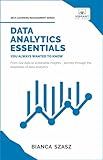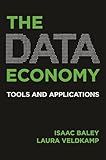Best Pandas DataFrame Tools to Buy in December 2025

Data Analytics Essentials You Always Wanted To Know : A Practical Guide to Data Analysis Tools and Techniques, Big Data, and Real-World Application for Beginners



Statistics: A Tool for Social Research and Data Analysis (MindTap Course List)



Data Analysis with LLMs: Text, tables, images and sound (In Action)



The Data Economy: Tools and Applications



Data Analysis with Open Source Tools: A Hands-On Guide for Programmers and Data Scientists



Advanced Data Analytics with AWS: Explore Data Analysis Concepts in the Cloud to Gain Meaningful Insights and Build Robust Data Engineering Workflows ... (Data Analyst — AWS + Databricks Path)



Python Tools for Scientists: An Introduction to Using Anaconda, JupyterLab, and Python's Scientific Libraries



Head First Data Analysis: A learner's guide to big numbers, statistics, and good decisions


To group and calculate the monthly average in a Pandas dataframe, you can follow these steps:
- Import the necessary libraries:
import pandas as pd import numpy as np
- Create a Pandas dataframe with your data:
data = { 'date': ['2021-01-01', '2021-01-02', '2021-01-03', '2021-02-01', '2021-02-02', '2021-02-03'], 'value': [10, 20, 30, 40, 50, 60] } df = pd.DataFrame(data)
- Convert the 'date' column to a pandas datetime object:
df['date'] = pd.to_datetime(df['date'])
- Set the 'date' column as the index of the dataframe:
df = df.set_index('date')
- Use the resample function to group the data by the desired frequency, in this case, 'M' for monthly:
df_monthly = df.resample('M')
- Apply the desired aggregation function, such as mean(), to calculate the monthly average:
monthly_average = df_monthly.mean()
- Print the resulting dataframe or access the values:
print(monthly_average)
The code above groups the dataframe by month and calculates the average value for each month. You can modify the code to fit your specific data and requirements.
What is the purpose of the agg() function in Pandas groupby?
The agg() function in Pandas groupby is used to perform multiple aggregation operations simultaneously on a DataFrame or a Series. It allows you to specify multiple aggregation functions for different columns or the same column and return the results in a single DataFrame. This function is useful when you want to apply different aggregation functions to different columns or need to perform multiple aggregations in one go.
What is the effect of using the as_index parameter in the groupby() function?
The as_index parameter in the groupby() function determines whether the grouped by column(s) are set as the index in the resulting DataFrame or not.
When as_index=True, the grouped by column(s) become the index of the resulting DataFrame. This means that the groups become the index levels, and the grouping column(s) are removed from the DataFrame's columns.
When as_index=False, the grouped by column(s) are not set as the index. The resulting DataFrame will have the grouped by column(s) as regular columns in addition to the index.
Overall, the effect of using the as_index parameter is to control the hierarchy and structure of the resulting DataFrame after performing groupby operations.
What is a Pandas dataframe?
A pandas dataframe is a two-dimensional, tabular data structure in the Python programming language. It is similar to a table in a relational database or a spreadsheet, where data is organized in rows and columns. It consists of labeled columns (called variables or features) and rows (called observations or instances) that hold data of different types (such as numbers, strings, or dates). This data structure is provided by the pandas library in Python and offers various methods and operations for data manipulation, analysis, and cleaning.
